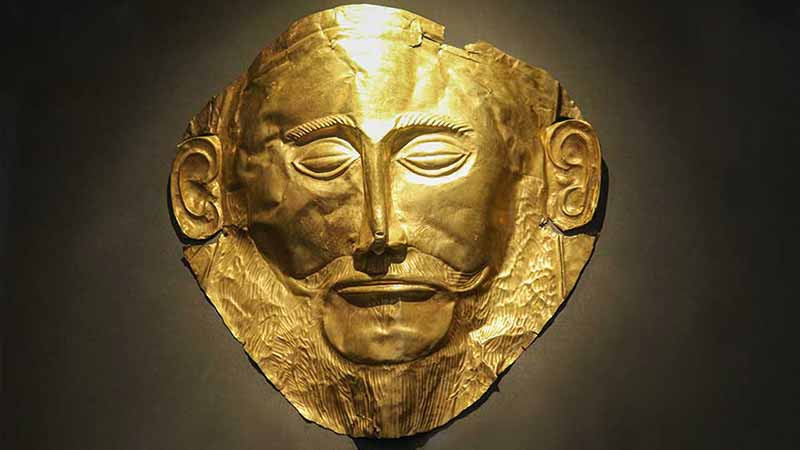
Truva savaşında Yunan komutanı Agamemnon kimdi ve nasıl öldürüldü?
Homer'in İlyada'sına göre Agamemnon, Truva Savaşı'nda Yunan kuvvetlerinin lideriydi. Agamemnon, Menelaus'un kardeşi ve Klytemnestra'nın kocası olan Atreus ve Aerope'nin oğluydu. Efsaneye göre Agamemnon, gemilerinin Truva'ya yelken açması için uygun rüzgarları elde etmek için kızı Iphigenia'yı kurban etti.
Savaş sırasında Agamemnon, Yunan kuvvetlerini birçok zafere götürdü ve sonunda savaşta galip geldi. Savaştan sonra Agamemnon, karısı Clytemnestra ve sevgilisi Aegisthus tarafından öldürüldüğü Miken'e döndü.
Agamemnon genellikle bir güç ve güç sembolü olarak görülür ve hikayesi genellikle kibrin (aşırı gurur) tehlikelerini göstermek için kullanılır. Karısının ve sevgilisinin elinde ölmesi, kızını feda ettiği için bir ceza olarak görüldüğü için aynı zamanda bir adalet sembolü olarak görülüyor.
Truva Savaşı'nın büyük kahramanı Agamemnon, savaşın sonunda kendi karısı Klytemnestra ve sevgilisi Aegisthus tarafından öldürüldü.
Clytemnestra, Agamemnon'un kızları Iphigenia'yı savaş başlamadan önce tanrılara kurban etmesine hâlâ üzüldüğü için, cinayet bir tutku ve intikam nöbeti içinde gerçekleşti.
Agamemnon savaştan eve döndüğünde, Clytemnestra ve Aegisthus onun ölümünü planladı. Clytemnestra, Agamemnon'u bir ziyafet ve sıcak bir kucaklamayla saraylarında karşıladı, ancak onun haberi olmadan, sarayın banyosunu bir kapakla gizlemişti.
Agamemnon banyoya adımını attığında, Clytemnestra ve Aegisthus gizli kapıdan çıkıp ona saldırdılar. Clytemnestra daha sonra Agamemnon'u çift başlı bir baltayla öldürürken, Aegisthus onu yerde tuttu.
Agamemnon'un öldürülmesinin intikamı, hem Clytemnestra'yı hem de Aegisthus'u öldüren oğlu Orestes tarafından Fury'lerin kehanetini yerine getirerek alındı.
Agamemnon was the leader of the Greek forces in the Trojan War, according to Homer’s Iliad. Agamemnon was the son of Atreus and Aerope, the brother of Menelaus, and the husband of Clytemnestra. According to the myth, Agamemnon sacrificed his daughter Iphigenia to gain favorable winds for his ships to sail to Troy.
During the war, Agamemnon led the Greek forces to many victories and was eventually victorious in the war. After the war, Agamemnon returned to Mycenae, where he was murdered by his wife Clytemnestra and her lover Aegisthus.
Agamemnon is often seen as a symbol of power and strength, and his story is often used to illustrate the dangers of hubris (excessive pride). He is also seen as a symbol of justice, as his death at the hands of his wife and her lover is seen as a punishment for his sacrifice of his daughter.
Agamemnon, the great hero of the Trojan War, was murdered at the end of the war by his own wife, Clytemnestra, and her lover, Aegisthus.
The murder occurred in a fit of passion and vengeance, as Clytemnestra was still upset over Agamemnon's sacrifice of their daughter Iphigenia to the gods before the war had begun.
When Agamemnon returned home from the war, Clytemnestra and Aegisthus plotted his death. Clytemnestra welcomed Agamemnon into their palace with a feast and a warm embrace, but unbeknownst to him, she had hidden the bath of the palace with a trapdoor.
When Agamemnon stepped into the bath, Clytemnestra and Aegisthus burst out of the trapdoor and attacked him. Clytemnestra then killed Agamemnon with a double-headed axe, while Aegisthus held him down.
The murder of Agamemnon was avenged by his son Orestes, who killed both Clytemnestra and Aegisthus, fulfilling the prophecy of the Furies.
